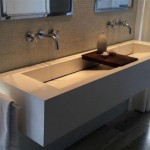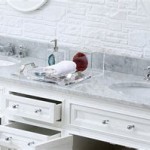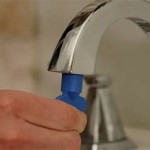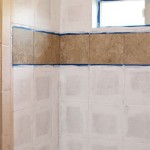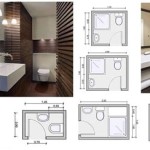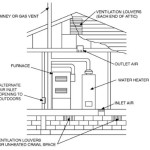Bathroom Sink Overflow Drain Cover: Functionality, Aesthetics, and Maintenance
The bathroom sink overflow drain cover, a seemingly minor component, plays a crucial role in maintaining the hygiene, safety, and aesthetic appeal of a bathroom. Its primary function is to conceal the overflow drain opening located near the top of the sink basin. While its presence is often overlooked, understanding its purpose, available types, and proper maintenance is essential for homeowners and plumbers alike.
The overflow drain itself is a safety mechanism designed to prevent water from overflowing the sink. When the drain is blocked or the faucet is left running unattended, water levels rise. The overflow drain allows excess water to escape into the drainpipe, preventing potential water damage to surrounding surfaces and structures. The cover serves to hide this sometimes unsightly opening and, in some cases, contribute to the overall design of the fixture.
This article explores the various aspects of bathroom sink overflow drain covers, encompassing their functions, types available, installation considerations, potential problems, and maintenance requirements. A comprehensive understanding of these factors enables informed decisions regarding selection, installation, and upkeep, ultimately contributing to a more functional and aesthetically pleasing bathroom environment.
Understanding the Functionality of the Overflow Drain and Cover
The primary function of the overflow drain is flood prevention. Without it, an unattended running faucet could easily overflow the sink, leading to water damage on the bathroom floor, walls, and even potentially affecting lower levels of the house. The overflow drain is typically connected to the main drainpipe via an internal channel within the sink itself. This allows excess water to bypass a blockage in the main drain and directly enter the plumbing system.
The overflow drain cover serves several purposes. First and foremost, it provides an aesthetic covering for the drain opening. Uncovered, the hole can appear unfinished and detract from the overall look of the sink. Second, in some designs, the cover can act as a secondary filter, preventing larger debris from entering the overflow channel and potentially causing blockages. Third, certain covers are designed to improve water flow into the overflow drain, ensuring efficient drainage during overflow situations. Lastly, depending on the material, the cover can protect the edges of the overflow drain opening from chipping or damage.
The efficiency of the overflow drain system depends on both the size and design of the drain and the functionality of the cover. A poorly designed or improperly installed cover can impede water flow, reducing the effectiveness of the overflow drain in preventing floods. Therefore, selecting a cover that is compatible with the sink and properly installed is crucial.
The location of the overflow drain is typically near the top of the sink basin, below the rim. This placement ensures that the drain only activates when the water level reaches a point where overflowing is imminent. The design of the overflow channel and its connection to the main drainpipe can vary depending on the sink manufacturer and model.
The integration of the overflow drain system into the sink's overall design reflects a balance between functionality and aesthetics. Modern sinks often incorporate seamless overflow drain designs, with covers that blend seamlessly with the sink's surface. This design approach minimizes the visual impact of the overflow drain while ensuring its effectiveness.
Exploring Different Types of Overflow Drain Covers
Bathroom sink overflow drain covers come in a variety of materials, shapes, sizes, and finishes, each offering different aesthetic and functional characteristics. The choice of cover often depends on the style of the sink, the overall bathroom décor, and personal preferences. Understanding the available options is essential for selecting a cover that complements the sink and contributes to the overall aesthetic appeal of the bathroom.
One common type of overflow drain cover is the metal cover. These covers are typically made of brass, stainless steel, or chrome-plated materials. Metal covers are durable, resistant to corrosion, and available in a wide range of finishes to match various faucet styles and bathroom hardware. They often feature a simple, clean design that complements a variety of sink styles.
Plastic overflow drain covers are another common option. These covers are typically made of ABS plastic or other durable polymers. Plastic covers are lightweight, inexpensive, and available in a variety of colors. They are often easier to clean than metal covers and are less prone to corrosion. However, they may not be as aesthetically pleasing as metal covers and may be more susceptible to scratching or fading over time.
Another type of cover is the ceramic or porcelain cover. These covers are made of the same material as the sink itself, providing a seamless and integrated look. Ceramic and porcelain covers are typically more expensive than metal or plastic covers, but they offer a high level of aesthetic appeal and durability. They are also easy to clean and resistant to staining.
Beyond the material, overflow drain covers also vary in shape and size. Some covers are round, while others are oval or rectangular. The size of the cover should be proportionate to the size of the sink and the overflow drain opening. Some covers are designed to sit flush with the sink's surface, while others are slightly raised. The design of the cover can also influence its functionality, with some covers featuring slots or holes to improve water flow into the overflow drain.
The mounting mechanism of the overflow drain cover can also vary. Some covers are simply pressed into place, while others are secured with screws or adhesive. The choice of mounting mechanism depends on the design of the sink and the cover. Screw-mounted covers are typically more secure, while press-fit covers are easier to install and remove.
Installation and Maintenance of Overflow Drain Covers
Proper installation and regular maintenance are crucial for ensuring the functionality and longevity of bathroom sink overflow drain covers. Improper installation can lead to leaks, reduced water flow, and even damage to the sink. Neglecting maintenance can result in the buildup of debris, corrosion, and reduced aesthetic appeal.
Installation typically involves aligning the cover with the overflow drain opening and securing it in place. The specific installation procedure depends on the type of cover and the mounting mechanism. For press-fit covers, the cover is simply pressed into the opening until it is snug. For screw-mounted covers, screws are used to secure the cover to the sink. Adhesive-mounted covers require the application of adhesive to the back of the cover before it is pressed into place. It’s imperative to make sure that the cover is properly aligned to ensure that the overflow drain functions as designed.
Before installing a new overflow drain cover, it is important to clean the area around the drain opening. This will remove any dirt, debris, or old adhesive that could prevent the cover from seating properly. It is also important to ensure that the drain opening is free of any cracks or chips that could compromise the seal.
Regular maintenance of overflow drain covers involves cleaning them to remove dirt, soap scum, and other debris. The frequency of cleaning depends on the usage of the sink and the water quality. In general, cleaning the cover once a month is sufficient for most households. The cover can be cleaned with a mild detergent and a soft cloth. Abrasive cleaners should be avoided as they can scratch or damage the cover's finish.
In addition to cleaning, it is also important to inspect the overflow drain cover for signs of damage or corrosion. Cracks, chips, or corrosion can compromise the cover's seal and reduce its effectiveness. If damage is detected, the cover should be replaced promptly. The overflow drain itself should also be cleaned periodically to ensure that it is free of debris. This can be done by pouring a mixture of baking soda and vinegar down the drain, followed by hot water.
For sinks with more complex overflow drain systems, such as those with integrated pop-up drains, the maintenance procedure may be more involved. These systems often require disassembly for thorough cleaning and inspection. It is important to consult the manufacturer's instructions before attempting to disassemble any part of the overflow drain system. Furthermore, consider that improper maintenance can void any warranty.
Properly maintaining the overflow drain and its cover not only ensures their functionality but also extends their lifespan. By following these guidelines, homeowners can prevent costly repairs and maintain a clean and efficient bathroom environment.
The selection of the appropriate overflow drain cover is also a factor in simplifying maintenance. Covers with smooth surfaces and minimal crevices are generally easier to clean than those with intricate designs. The material of the cover also plays a role, with some materials being more resistant to staining and corrosion than others.

Bathroom Sink Overflow Hole Cover Ring Trim Insert

Bathroom Sink Overflow Hole Cover Ring Trim Insert

Bathroom Sink Hole Cap Kitchen Basin Trim Round Overflow Drain Cover Chrome Ring

Oval Bathroom Sink Basin Chrome Bowl Drain Overflow Installation

Bathroom Sink Basin Overflow Hole Cover Cap Round Decorative Ring Washbasin Us

Oval Bathroom Sink Basin Chrome Bowl Drain Overflow Installation

Kitchen Bathroom Basin Trim Ring Bath Sink Hole Round Overflow Drain Cover Hollow Wash Temu

Bwe 1 22 In Sink Basin Trim Overflow Cover Brass Insert Hole Round Caps C 9 Chrome The Home Depot

2pcs Kitchen Bathroom Drain Plug Hole Cover Cap Bath Basin Sink Overflow Ri Ls2

Fule 4 Pack Overflow Drain Cover Sink Ring Kitchen Bathroom Hole Round Basin Trim Bath Chrome Rings Insert Cap Com
Related Posts
